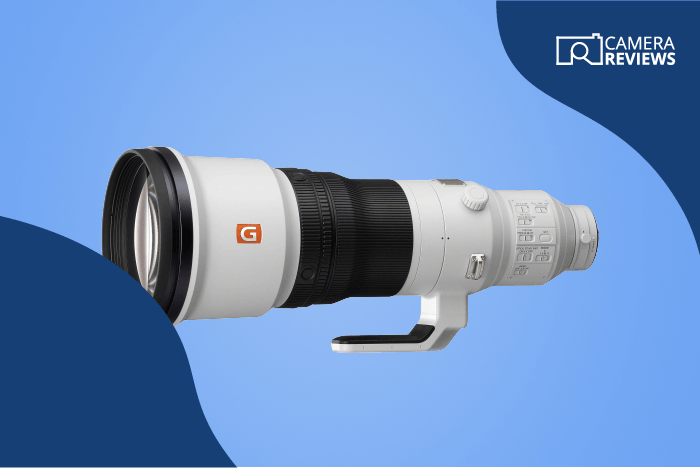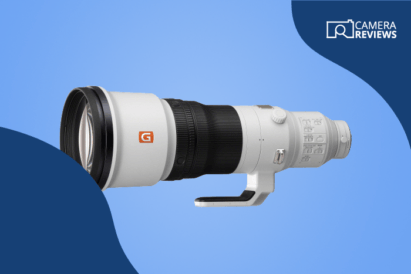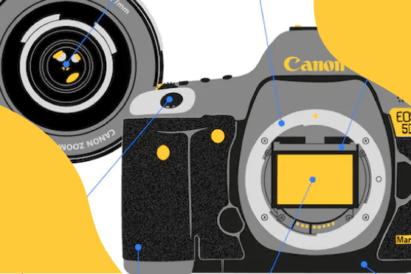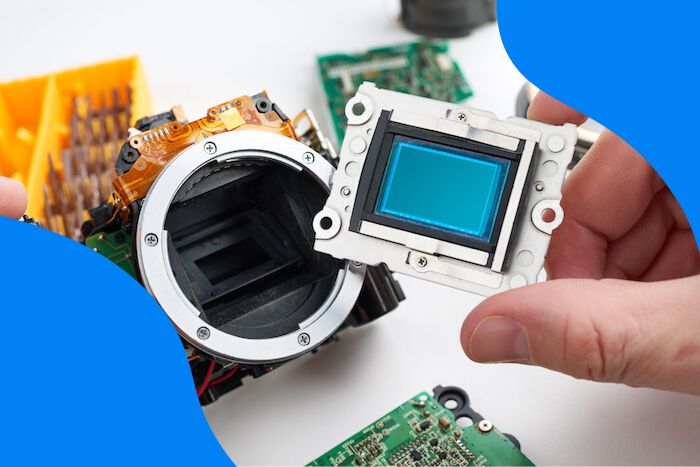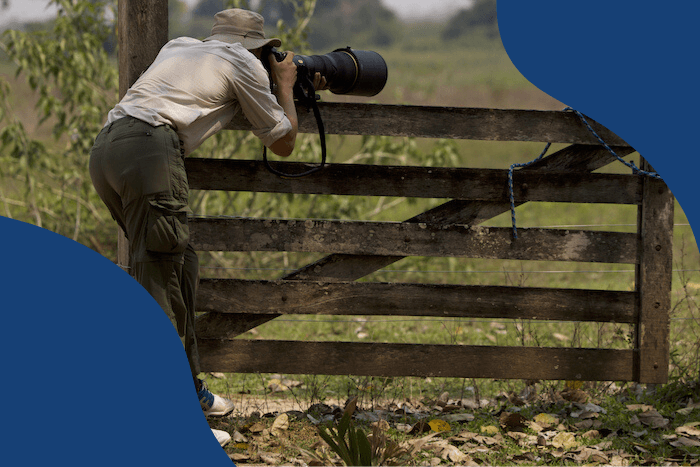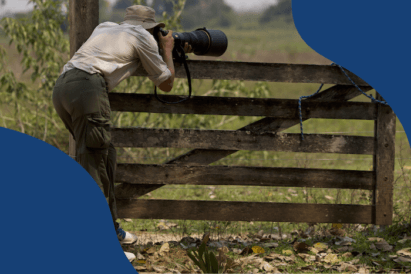There are so many types of camera lenses that it’s easy to get confused. Do you know the difference between a tilt-shift lens and a macro lens? Or a kit lens and a telephoto lens?
Almost everything in photography involves trade-offs, of course. But this guide will explain all the lens types so you can rent or buy your lenses with confidence!
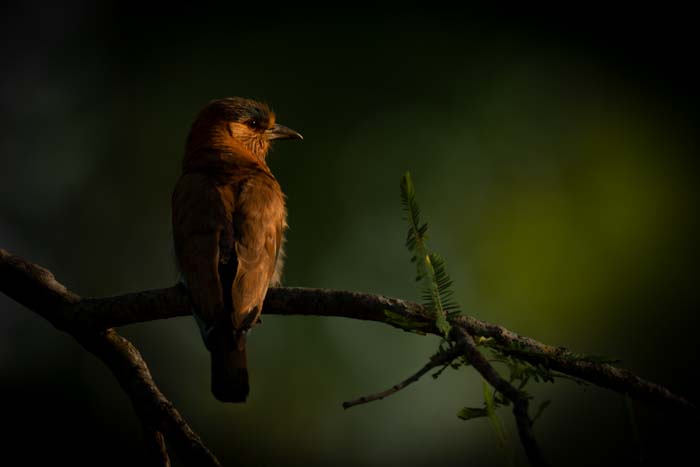
Factors to Consider With Different Types of Camera Lenses
Lens mounts vary by manufacturer and by type of camera. Full-frame, crop-sensor, and Micro Four Thirds cameras need different lenses. So do DSLRs and mirrorless cameras.
So compatibility is the first big issue to look at. You must ensure your camera and lenses have matching mounts (or buy a suitable adapter).
After you’ve found a compatible range of lenses, the main factor to consider is the focal length and, thus, the angle of view.
But you should also bear in mind a few other factors. These include the purpose, maximum aperture, perspective, features, weight, availability—and price!
DSLR Lenses vs Mirrorless Lenses
The first thing you need to consider is what kind of camera you have. Interchangeable-lens cameras come in two types—DSLR and mirrorless.
DSLRs have an optical viewfinder that requires a flip-up mirror and pentaprism. Mirrorless cameras have an electronic viewfinder that doesn’t need either, so the basic layout is different.
That means the manufacturers design lenses specifically for each type of camera. You can mix and match, but only if you use an adapter.
Adapters such as Nikon’s FTZ II are cheap and don’t have any glass in them. So they don’t affect the maximum aperture or the autofocus system. But they don’t work properly (or at all) with some older lenses. Plus, they’re a pain to fit and carry around!
Full-Frame vs Crop-Sensor vs Micro Four Thirds Lenses
The size of your camera’s sensor is also important when choosing a lens. Full-frame cameras have a 35mm sensor, which is 36 x 24mm. Crop-sensor cameras have smaller sensors. The difference is measured using the crop factor.
The main format is APS-C, which has a crop factor of 1.5x for Nikon or 1.6x for Canon. But you can also buy Micro Four Thirds (MFT) cameras with a crop factor of 2x.
Panasonic and Olympus are the main manufacturers of MFT cameras and lenses. And they can be used interchangeably. But you get better image stabilization if you stick to the same brand. Sigma also produces third-party MFT lenses.
If you multiply the focal length of any lens designed for a crop-sensor camera by the crop factor, you get the full-frame equivalent. Hence, a 100mm lens designed for a Canon APS-C camera behaves like a 150mm lens on a full-frame camera.
You can use full-frame lenses on a crop camera. But the narrower field of view of crop lenses means they can’t project an image over an entire full-frame sensor.
That means you’d get dark vignetting around the edges. So you can’t use APS-C lenses on a full-frame camera—and you can’t even buy an adapter!
The advantage of crop cameras is that they tend to be smaller and cheaper. Crop lenses also don’t have to be as long to get the same magnification as they would on a full-frame camera.
But if you want the same framing, getting a shallow depth of field with an APS-C camera and lens is harder. This is because the effective aperture will be narrower.
Zoom Lenses vs Prime Lenses
Choosing between a zoom lens and a prime lens means trading off convenience and price against image quality. Zoom lenses have a range of focal lengths, making them very convenient.
You only need one zoom lens instead of several prime lenses, which saves money and weight. You can also zoom in and out to frame your subject correctly.
But the construction of zoom lenses is complex. They have more lens elements than primes and an extra mechanism to control the zoom function.
All that means any given zoom lens is heavier than a prime lens with a similar focal length. A zoom also may affect the maximum aperture. Some zooms don’t have a fixed aperture. So you lose a stop or more (of light) at the highest focal length.
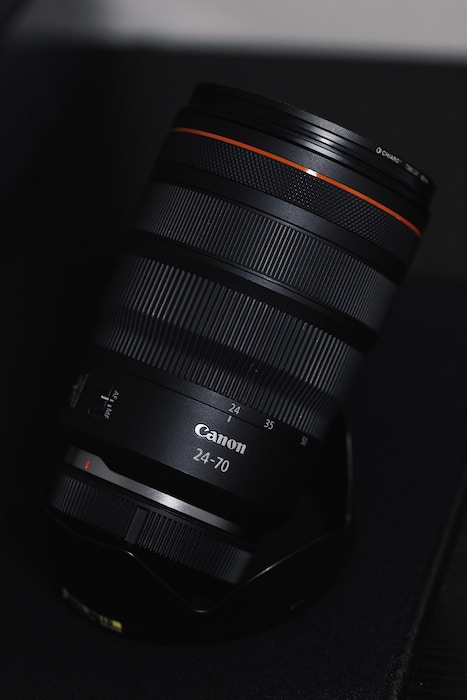
Finally, zooms are generally designed for the consumer market. This means image quality is often sacrificed for price and convenience. For example, a zoom lens is often at its sharpest at f/8 rather than at the maximum aperture.
If you want to take the best possible pictures, you need prime lenses. These are usually more expensive, but there are reasons for that.
They offer the sharpest possible pictures with excellent color rendition. And if you’re willing to pay for it, the wider maximum aperture means better low-light performance and shallower depth of field. This is ideal for sports and wildlife photography.
Lenses by Focal Length
A lens’s focal length determines the field of view and magnification. The longer the lens, the narrower the field of view and the greater the magnification.
Longer lenses also provide a shallower depth of field. This helps separate your subject from the background. If you want to work it out exactly, a rule of thumb is to divide the focal length by 50.
The human eye is roughly equivalent to a 50mm lens. So the magnification is just the multiple of that. For example, a 500mm lens offers 10x magnification, as 500 divided by 50 is 10.
The focal length usually determines the purpose of a lens. A wildlife photographer might want a super telephoto lens to capture skittish animals and birds.
But a landscape photographer might want to capture as much of the scene as possible with a wide-angle lens. There are exceptions, of course. But your chosen genre of photography should guide you toward the focal lengths you need.
1. Ultra-Wide Lenses (4-14mm) or Fisheye Lenses (4-10mm)
Ultra-wide or fisheye lenses have an angle of view of up to 180 degrees. This lets you capture a huge amount of the scene. But it does lead to distortion. You can also choose between a rectangular image and a circular one.
Fisheye lenses are limited in their potential uses. But they can be used as a fun way to photograph a crowd at an outdoor event or play with perspective.
The manufacturer Altura specializes in fish-eye lenses. And the 7artisans 10mm f/2.8 E prime lens is a good-value fish-eye lens for beginners. It’s compatible cameras with Canon RF, Nikon Z, Sony E, and L mounts (Leica, Panasonic, and Sigma).
- Dramatic exaggeration of perspective
- Good for creative shots
- Limited general use
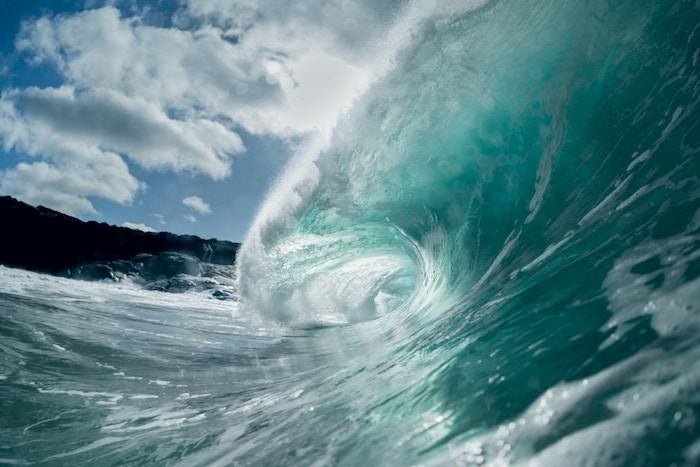
2. Wide-Angle Lenses (14-35mm)
Wide-angle lenses are favored for landscape photography as they let you show so much of the scene. The short focal length gives them a wide angle of view and a deep depth of field. This keeps almost everything acceptably sharp—even at wide apertures.
The only downside is that they sometimes introduce distortion. Wide-angle lenses emphasize close-up objects and make distant ones seem further away.
This playing with perspective can be used deliberately to give the viewer a sense of “being there.” But it’s easy to introduce distortion if you don’t keep your camera straight and level—especially at short focal lengths.
You can use wide-angle lenses for any type of photography. But they’re best for landscapes, real estate travel, and street photography. They also work for wide-angle close-ups of wildlife.
They also tend to be small, light, and affordable. So you don’t have to break the bank to buy one!
The Rokinon FE14M-C 14mm f/2.8 is a popular ultra-wide lens for beginners. It’s for Canon EF, Fujifilm X, and Sony A mount cameras. And the Sigma 14-24mm F2.8 DG HSM is a popular Art lens for professionals with Canon (EF), Nikon, and Sigma cameras.
- Wide field of view for interiors or landscapes
- Deep depth of field
- Potential distortion
- Limited use for sports and action photography

3. Normal or Standard Lenses (35mm to 55mm)
A “normal” or “standard” lens provides a view of the world like that of the human eye. This tends to be at a focal length roughly equal to the diagonal of the sensor in your camera.
Full-frame sensors are 43.3mm from corner to corner. So normal lenses are usually 40mm, 50mm, or 55mm. The 50mm lens is the most common in the world. Oskar Barnack, the creator of the Leica camera, popularized it.
All the major camera brands have several versions of the “nifty fifty.” Highly regarded ones include the Canon 50mm f/1.8 STM for RF mounts, the Nikon Z 50mm f/1.8 S, and the Sony FE 50mm f/1.2 GM for E mounts.
- Affordable
- Versatile
- No distortion
- Not short enough for dramatic landscapes
- Not long enough for wildlife or sports
4. Portrait Lenses (85mm)
Portrait lenses are simply lenses suitable for taking portraits. There’s no strict definition of what the focal length should be. But 85mm is often seen as “ideal.”
An 85mm lens flattens the perspective slightly. It’s flattering to human subjects and lets the photographer work at a comfortable distance.
Again, all the major camera brands have versions of the 85mm. Premium 85mm lenses include the compact Canon RF 85mm f/2 STM, the Nikon Z 85mm f/1.8 S, and the ZEISS Batis 85mm f/1.8 for Sony E mount.
- Ideal for portrait photography
- Relatively small and light
- Too specialized for other genres
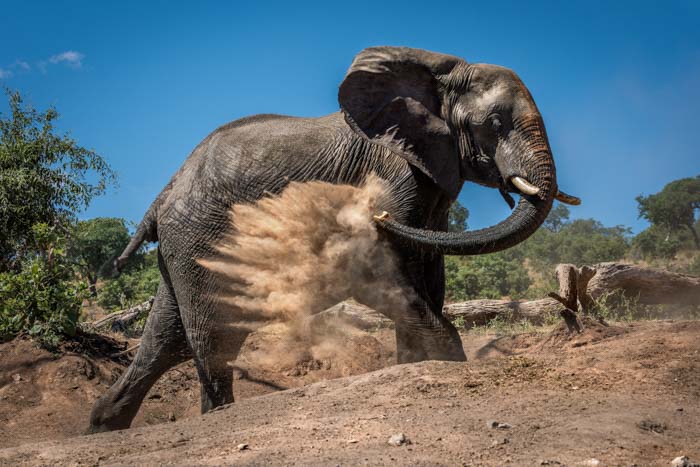
5. Short Telephoto Lenses (70mm to 135mm)
Telephoto lenses are simply lenses that use a specific arrangement of elements to make them shorter than their focal lengths. Thus, an 800mm lens might only be around 450mm long. This makes them much more portable and convenient to use.
But “telephoto” is now just another word for a long lens. People talk about “using a telephoto,” whatever the internal construction of the lens. They just mean that they need more reach to take the best shot.
Short telephoto lenses start at around 70mm. Below that, there’s no need to shorten the lens using the telephoto system.
They’re useful for portraits as they normally cover the “ideal” focal length of 85mm. But you can also use them for any other shot that requires extra reach and a shallower depth of field.
- More flexible than a prime portrait lens
- Lacks reach for candid portraits or other genres

6. Medium Telephoto Lenses (135mm to 200mm)
Medium telephoto lenses are just a bit longer. But there’s no other difference between them and short telephoto lenses. In fact, one of the “classic” zoom lenses is the 70-200mm, which covers both short and medium focal lengths.
There are premium 70-200mm lenses by Canon, Nikon, and Sony. They include the RF 70-200mm f/2.8 USM L Series lens, the Nikon Z 70-200mm f/2.8 S, and the Sony FE 70-200mm f/2.8 GM OSS.
- Enough reach for candid portraits
- Too long for studio portraits
- Too short for sports or wildlife

7. Super Telephoto Lenses (200mm+)
Super telephoto lenses above 200mm are generally most useful for sports and wildlife photography. The most common lengths are between 400mm and 800mm.
These offer much more reach due to the high degree of magnification. They also have a much shallower depth of field than other focal lengths. This is important if you’re trying to isolate your subjects against a blurred background.
Super telephoto lenses also often come with extra controls and features. These include function buttons, focus limiters, and different image stabilization modes.
The main problems with these lenses are their size and weight. Mirrorless lenses are smaller and lighter than those intended for DSLRs, but it’s almost impossible to handhold a lens if it weighs over 5 lbs (2.2 kg)!
The other issue is price. If you go for a fast prime, you can easily spend over $15,000 for a 400mm or 600mm lens.
I had to do it myself! But that’s only really worth it if you’re a wildlife photography pro who must work in low light and separate your subject from the background.
As a wildlife photographer, I love my Sony FE 600mm f/4 GM OSS super-telephoto lens. At 6.6 lb (3 kg), it’s light enough to handhold, whereas my old Nikon 800mm was 10.1 lb (4.6 kg)!
The Sigma 500mm f/4 DG OS HSM super telephoto lens is one of the prime lenses for Canon EF, Nikon F, and Sigma SA mounts. It’s not cheap, but good value.
- Great reach
- Shallow depth of field
- Extra features and controls
- Must-have for professional sports and wildlife photographers
- Generally big and heavy
- Expensive for fast primes
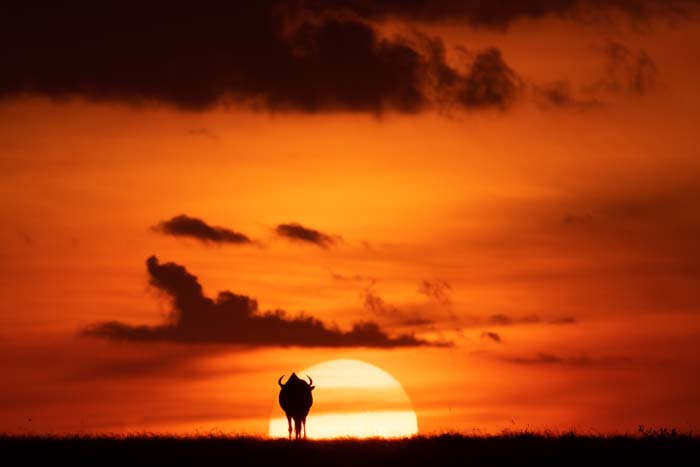
Other Types of Lenses
As well as those I’ve mentioned, a few specialty lenses serve a unique purpose that has little to do with the focal length. Here are the main ones on offer.
8. Macro Lenses
Macro lenses can be anything from 15mm to 200mm long. But they’re defined by their reproduction ratio and closest focusing distance. This is because they’re meant for taking pictures of small objects and insects at close range.
A true macro lens can achieve a 1:1 reproduction ratio. This means the image on the sensor is as large as the subject in real life. To do that, it has to be able to focus at a distance of only a few inches.
The focal length may not define a macro lens. But it’s still relevant. A longer 105mm or 180mm lens lets you photograph things from slightly further away. This is useful if you want to take pictures of skittish insects such as bees, wasps, and butterflies.
The Canon RF 85mm f/2 STM mentioned earlier as a portrait lens also works as a macro lens. The Nikon Z 105mm f/2.8 and Sony FE 90mm f/2.8-22 prime lenses are also highly regarded macros.
- Great for insect close-ups or product photography
- Limited general use

9. Mirror Lenses
A mirror (reflex or catadioptric) lens is a particular kind of telephoto lens that offers long reach but a small and light construction. The basic idea is that light from the subject bounces up and down the lens with the aid of mirrors at both ends.
Mirror lenses were popular in the ’70s and ’80s. But they’ve gone out of fashion due to the ring-like bokeh, lower contrast and sharpness, and lack of an adjustable aperture.
There are some manufacturers still making mirror lenses, like Tokina. They have a 400mm telephoto lens for Nikon F-mounts. But the overall selection for mirror lenses is limited.
- Small and light
- Affordable
- “Doughnut” bokeh
- Lower contrast and sharpness
- Fixed aperture
10. Tilt-Shift Lenses
Tilt-shift lenses can help architectural photographers straighten the vertical lines of buildings. You can also use them to make elements in the picture appear miniaturized and look like toys.
But you can achieve similar results in editing software like Lightroom or Photoshop. So they have limited usefulness.
A good budget, third-party lens when you’re just starting out is the Samyang 24 mm f/3.5 tilt-shift lens. It’s compatible with Canon EF, Fujifilm X, Nikon 1, and Sony A and E mounts.
- Good for architectural photography
- Can make buildings look like toys
- Limited general use
- Not needed if using correction software like Lightroom or Photoshop
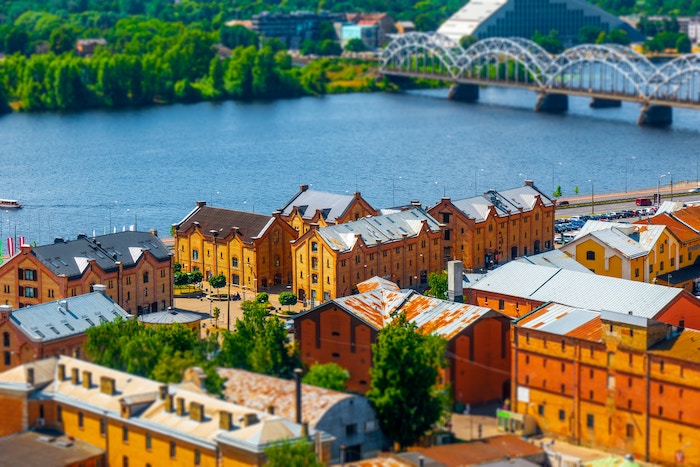
11. Infrared Lenses
In general, you don’t need a special lens for infrared photography. But a regular lens might have problems with flare, overexposed “hot spots,” or loss of sharpness and contrast.
Infrared (IR) lenses are very niche lenses. It’s more likely for you to explore creative photography with IR lens filters like Hoya’s 77mm R-72 infrared filter.
- It helps avoid problems normal lenses have with infrared photography
- Specialty lenses that are not useful for visible light
12. Kit Lenses
A kit lens is simply a lens that comes with the camera as a package deal. It’s usually a 50mm or wide-angle zoom, but it depends on the manufacturer.
The idea is to help save you money when starting with photography. This means a kit lens won’t necessarily provide great image quality. So you might want to replace it as you get more advanced.
- Cheap
- Convenient
- Versatile
- Poor image quality
13. Fixed Lenses
Many cameras come with fixed lenses (rather than interchangeable ones). That’s true of all compact cameras and bridge cameras (superzooms).
The advantage of a fixed lens is that it’s convenient. It means you don’t have to go to the trouble and expense of buying extra lenses.
The disadvantage is the lack of flexibility. If you want to change your lens, you must change your camera. And that’s a pain!
But world-renowned lens manufacturers like Zeiss and Leica provide fixed lenses for many point-and-shoot cameras. So a fixed lens can still be a quality one.
- Sometimes cheap or high-end
- Convenient
- Versatile
- Lack of flexibility
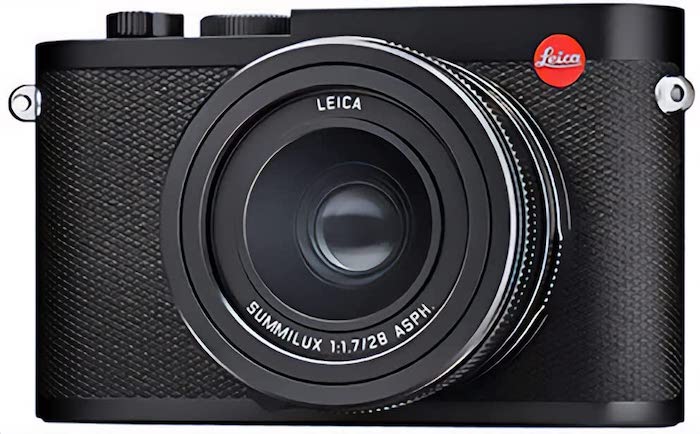
14. Teleconverters (Extenders)
Teleconverters (extenders for Canon users) are a cheap and convenient way of increasing your focal length. They are small lenses that fit between your camera and lens, and the magnification factor is usually 1.4x or 2x.
The advantage is that they’re relatively cheap. And you can add reach without buying an expensive new lens.
But a 1.4x teleconverter takes away one stop of light, and a 2x teleconverter takes away two. This makes it harder to operate in low light and narrows the maximum aperture. And that means a deeper depth of field and slower focus acquisition.
Some high-end fast primes now offer built-in teleconverters. That’s a game-changer for sports and wildlife photographers. They can now use a 400mm lens with a 1.4x teleconverter rather than carrying around a 400mm and a 600mm lens!
- Small, light, and affordable
- A convenient way to add reach
- It cuts down the maximum aperture
- Affects image quality
- Slows down autofocus (AF) acquisition
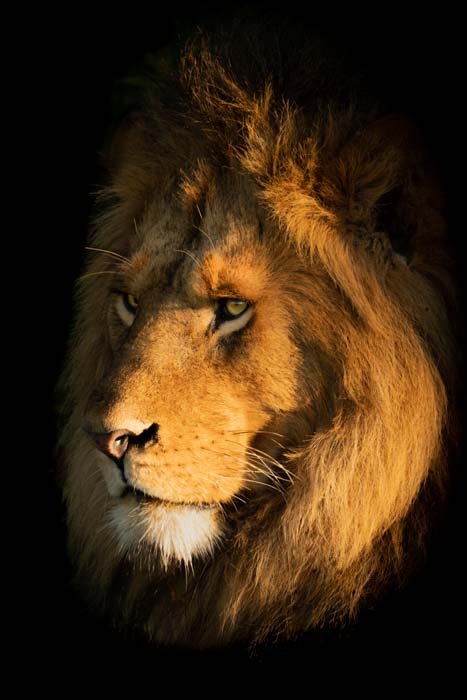
Conclusion
There are many different types of camera lenses to choose from, and many have complicated and unfamiliar names! That might be dangerous if it leads you to buy a lens that’s incompatible with your camera for whatever reason.
But I hope this guide has shown you what compatibility issues you might face and which lenses are best suited to most genres of photography. Now you must decide which lens will be best for you!



